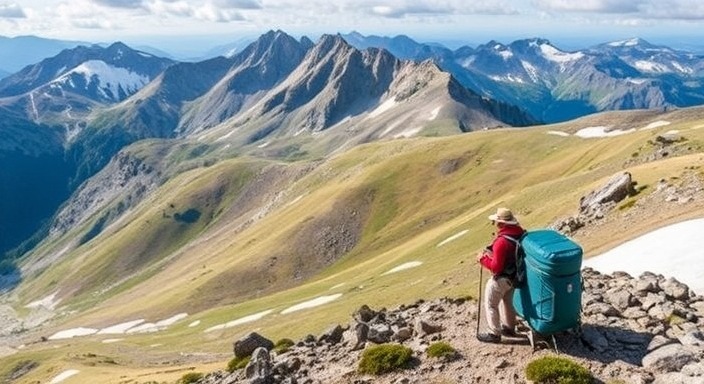Underrated Hiking Trails
Planning a multi-day trek can be a thrilling experience, but it requires careful preparation to ensure a safe and enjoyable journey. From choosing the right gear to mapping out your route, here’s a comprehensive guide to help you get started.
1. Choose the Right Trek for Your Skill Level
Before anything else, assess your fitness level and experience. Choose a trek that aligns with your capabilities to avoid overexertion.
Examples:
- Beginners: Appalachian Trail sections or Mount Fuji’s Yoshida Trail.
- Advanced: Everest Base Camp or the Snowman Trek in Bhutan.
Pro Tip: Start with shorter treks and gradually build up to more challenging routes.
2. Research the Route Thoroughly
Understand the terrain, weather conditions, and landmarks along your chosen route. This knowledge will help you pack appropriately and anticipate challenges.
Key Considerations:
- Distance and elevation gain.
- Availability of water sources and campsites.
- Seasonal weather patterns.
Comparison: Treks like the Inca Trail have regulated routes, while others like the Pacific Crest Trail allow for more flexibility.
3. Invest in Quality Gear
Having reliable gear is crucial for a successful trek. Prioritize essentials that are durable and lightweight.
Checklist:
- Backpack: 40-70 liters, depending on trek length.
- Sleeping Bag: Rated for the coldest expected temperature.
- Footwear: Broken-in hiking boots with ankle support.
- Clothing: Moisture-wicking layers and weatherproof outerwear.
Pro Tip: Test your gear on shorter hikes before the main trek.
4. Plan Your Food and Water
Proper nutrition and hydration are critical for maintaining energy levels during a trek.
Food Ideas:
- Lightweight, high-calorie meals like freeze-dried options.
- Snacks: Trail mix, energy bars, and dried fruits.
Water Tips:
- Carry a water filter or purification tablets.
- Plan refills at natural water sources along the trail.
5. Prepare for Emergencies
Safety should be a top priority. Equip yourself with tools and knowledge to handle potential emergencies.
Essentials:
- First-aid kit with medications.
- Map, compass, and GPS device.
- Emergency shelter and whistle.
Pro Tip: Inform someone about your trek itinerary and expected return date.
6. Train Your Body
Physical preparation is key for avoiding fatigue and injuries during your trek.
Training Plan:
- Cardio: Running, cycling, or swimming to build endurance.
- Strength: Focus on legs, core, and shoulders.
- Practice hikes with a loaded backpack.
7. Understand Leave No Trace Principles
Respect the environment by minimizing your impact.
Key Practices:
- Pack out all trash, including biodegradable items.
- Stick to marked trails to avoid damaging vegetation.
- Avoid disturbing wildlife.
8. Optimize Your Packing List
Packing smartly can make or break your trekking experience.
Tips:
- Use compression bags to save space.
- Balance your backpack weight (20-25% of body weight).
- Double-check essentials like permits and identification.
Example: Compare ultralight packing strategies versus traditional packing for different trek types.
9. Acclimate to the Environment
For high-altitude treks, acclimatization is crucial to prevent altitude sickness.
Strategies:
- Spend extra days at higher elevations before the main trek.
- Stay hydrated and avoid alcohol.
- Ascend gradually: “Climb high, sleep low.”
Pro Tip: Learn to recognize early symptoms of altitude sickness, such as headaches and nausea.
10. Mentally Prepare Yourself
Trekking challenges the mind as much as the body. Stay motivated and flexible.
Tips:
- Set realistic expectations for daily progress.
- Practice mindfulness to enjoy the journey, not just the destination.
- Stay positive even when faced with unexpected challenges.
Final Thoughts
Planning a multi-day trek requires time, effort, and attention to detail, but the rewards are unparalleled. By following these guidelines, you’ll be well-prepared to embark on a safe and memorable adventure. Remember, preparation is the key to turning challenges into triumphs. Happy trekking!

